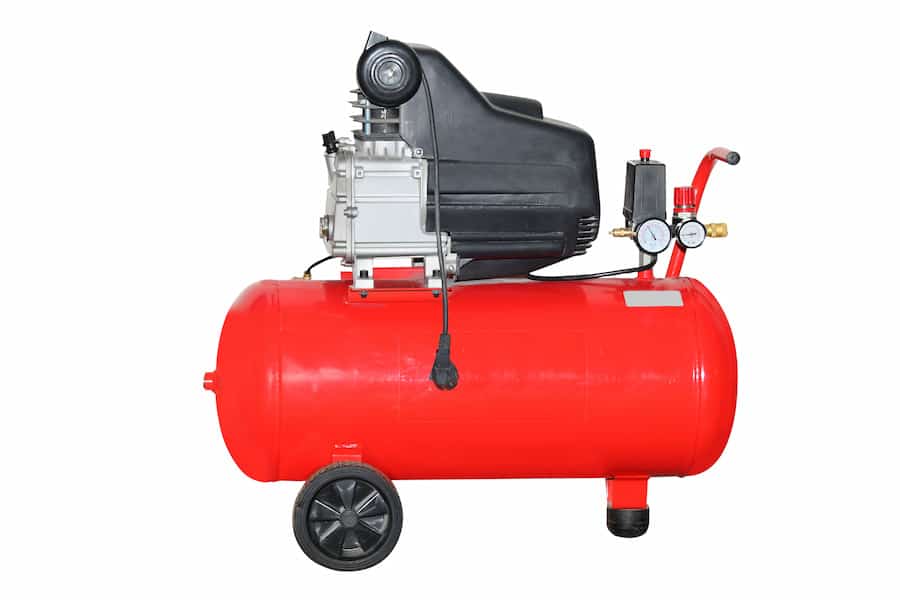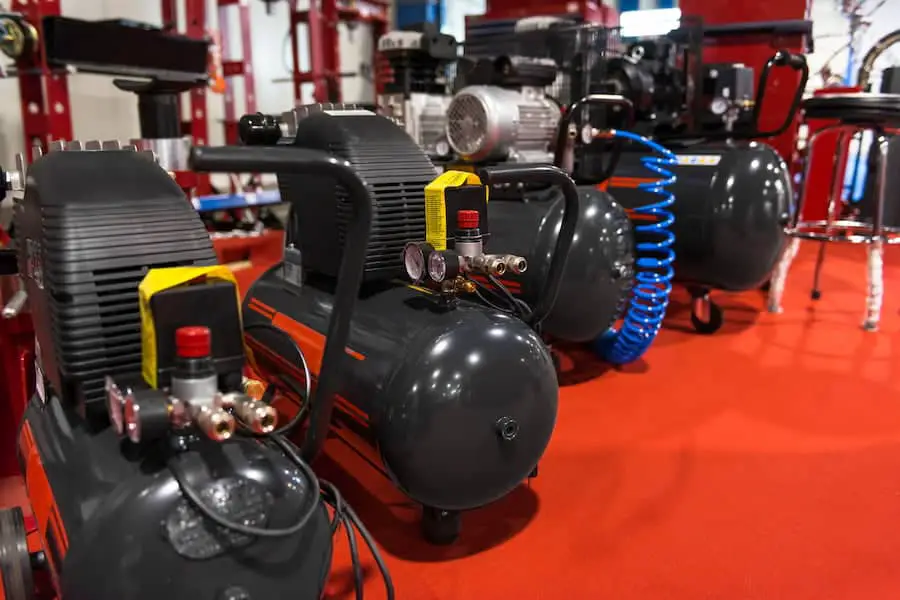The air compressor switch is a mechanical pressure-actuated electrical switch that depends on pressure to govern the parameters of an air compressor. To better understand how your air compressor works, it is necessary to understand the functionality of the compressor switch. So, how does an air compressor switch work?
Contents
How Does an Air Compressor Pressure Switch Work?
The diaphragm in the air compressor switch controls the airflow in the compressor to regulate the power output. When the tank has been filled with enough pressure, the diaphragm deforms and stops air from flowing until the pressure drops enough and the switch allows airflow again.
Knowing the components of an air compressor and the meaning of some of the terms used in air compressor switches is necessary before using an air compressor to inflate your car tire. So, let’s go on and look at some of the parts that make up the switch.

Components of An Air Compressor Pressure Switch
The compressor switch looks like a rectangular housing that contains several parts inside it that work together for the basic working of the switch. Every switch comprises the following components:
The Diaphragm
Also called the membrane, the diaphragm is made up of flexible material that changes according to the pressure levels inside the tanks. The rubber membrane is pushed up or down depending on the pressure within the compressor.
This diaphragm’s movement up and down causes the contacts to separate and touch accordingly.
Contacts
The contacts are two points in the air compressor switch that make or break the connection to complete or disconnect the circuit. Contacts are made from a conductive material such as metallic strips.
The circuit is complete when the contacts touch and the driver is powered on. Likewise, when the diaphragm separates the contact, the driver shuts down. All this happens to control the differential of the air compressor that I will discuss ahead.
Pressure Switch Relief Valve
This valve is located at the base of the pressure switch. It functions to relieve the pressure between the check valve and the pump.

Adjustment Springs
The spring adjusts the cut-in and cut-out pressure in the compressor switch. Let’s quickly define cut-in and cut-out pressure.
- Cut-out pressure is the highest valve that triggers the air compressor switch to break contact and turn off the motor.
- On the other hand, cut-in pressure is the minimum pressure that activates the air compressor switch to turn on.
- The differential is the range between the cut-in and cut-out pressure.
Tightening the adjustment springs in an air compressor switch makes the diaphragm need more pressure to turn the air compressor off. Loosening the adjustment spring makes the diaphragm require less air pressure to flex and turn the air compressor’s motor off.
This means that the adjustment springs play a vital role in maintaining a constant differential in your compressor.
The Auto / Off Lever
The auto/off lever is a lever or knob that toggles the air compressor switch to turn off automatically when the cut-out pressure is reached. If you set the lever to auto function, the compressor switch will turn on and off depending on the cut-in and cut-out pressure you set before.
Pressure Release Valve or Unloader Valve
When the air compressor switches trips, the unloader valve relieves any pressure that might be trapped between the check valve and the pump. The unloader may be located either on the side or bottom of the switch.
The Air Compressor Switch in Action
Now that you understand what makes up an air compressor switch, let’s analyze the process of how the switch functions in a compressor:
- When you switch on your air compressor, the pressure inside the tank increases until it reaches the preset cut-out pressure. This pressure causes the diaphragm in the air compressor switch to deform.
- Deformation of the diaphragm forces the compressor switch to break contact, turning off the motor and leaving the tank with enough pressure. The diaphragm will remain distorted as long as the pressure in the air compressor tank remains at a particular volume called the differential.
- When the air pressure in the compressor tank drops and hits the cut-in pressure, the diaphragm deforms in the opposite direction. This action of the diaphragm brings about contact and completes the circuit. The motor subsequently restarts, allowing more air into the compressor tank until the cut-out pressure is hit again.
This cycle goes on for as long as you use the compressor to supply the required pressure for your tools. Remember to watch for any malfunction, such as leakages in your air compressor switch. Though rare, any malfunction in your compressor switch may pose a danger.

How the Air Compressor Switch in a Positive Displacement Air Compressor Pump Works
Positive displacement compressor pumps are also called reciprocating compressor pumps. Air compressor switches with positive displacement pumps use piston movements to compress air to give rise to pressure. Understanding how these air compressor switches work is vital because of their significant reliance on the unloader valve.
In these air compressor switches, once the motor driver is switched off at cut-off pressure, the compression pump stops leaving the pistons frozen in their positions within the cylinders.
These pistons trap pockets of compressed air in the cylinder that loads the driver while at rest, making it difficult or impossible to restart the driver while the differential pressure is maintained.
With the driver stopped, the unloader valve of the air compressor opens to release the pressure built up in the pump. This prepares the pressure chamber for a new compression phase.
Importance of the Unloader Valve
The unloader valve in positive displacement air compressor switches carries out the on and off switching of the drivers. It is responsible for maintaining a steady air pressure output. The valve relieves any pressure trapped between the check valve and the pump when the air compressor switch trips.
The under loader valve’s adaptive switching ensures that the compressor operates within safe limits. With this, the compressor’s output pressure remains relevant to the desired application.
Conclusion
To wind up, keep in mind that some air compressor switches are adjustable with a secondary screw or knob. This adjustability allows setting the differential range that determines the cut-out pressure of your compressor system.
This may involve turning the adjuster knob or screw in a clockwise or anti-clockwise direction depending on the model of the air compressor.
